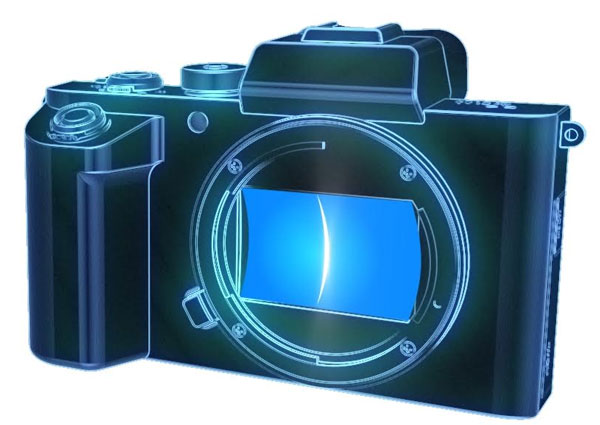
We are covering up Curve sensor news from a while but yesterday we have a received a email from French research institute CEA-Leti team about their upcoming Curve sensor announcement at CES show. The new curve image sensor can be used for Cameras, Smartphones and Security Cameras.
Curve and organic sensors are the future imagine technology, with the implementation of curve sensor the lens optics size will be reduced dramatically (upto 50-60% compared to conventional lens size) and that opens a bunch of possibilities to improve your existing interchangeable lens system.
Curve Sensor Advantages
- Form Factor: Reducing the number of lens elements in digital cameras from 10 to six reduces the size of the final compound lens by 60 percent. The overall length of the optical system also is shorter.
- Improved Performance: Curved image sensors reduce—and in some cases completely eliminate—optical aberrations like curvature of field and the vignetting effect. They also deliver increased brightness and a wider field of view.
- Cost: Reducing the number of lens elements and eliminating aspheric lens elements, which will be unnecessary, will lower the cost of systems integrating Pixcurve technology.
- Assembly: Fewer components means quicker and easier assembly—a major advantage for manufacturers.
CEA will host a ‘CEA Tech Village’ at booth 51253 in Eureka Park
Visitors at the Pixcurve booth at CES will see before-and-after examples on two tablets, illustrating the substantial size reduction that Pixcurve curved-sensor technology can bring and proving that there is no decline in image quality.
Press Release
Pixcurve at CES: New Curved Image Sensor Technology Reduces Size, Weight & Cost of Digital Cameras – and Improves Image Quality
GRENOBLE, France – Dec. 06, 2018 – With an innovation that could inject new life into the global digital-camera market, CEA-Leti will demonstrate its new technology for image sensors at CES 2019 that replicates the curve of the human retina. This curved image sensor technology breakthrough, called Pixcurve, requires fewer lens elements in digital cameras, which shrinks camera size by half and lowers costs – while improving image quality.
“The digital camera market has taken a huge hit from the massive adoption of smartphones, even though these bigger cameras deliver better image quality than smartphone cameras,” said David Henry, manager of packaging and assembling at CEA-Leti. “Pixcurve, which also reduces camera sizes in smartphones, microdisplays and virtual-reality glasses, provides camera manufacturers with cost effective, compact, easy-to-assemble optical components they need to bring their products to new levels of performance in the digital era.”
Portability is a big factor for many consumers, and smaller, lighter and less-expensive digital cameras will enable camera makers to increase their share of the global market. With Pixcurve, CEA-Leti, a French research institute, has developed an innovative solution for the visible imaging market and beyond.
Ask your questions if you have any







My question is: Are you working on smartphone camera modules to sell to OEM-s directly, or you only want to provide the sensor itself, and the module will be someone elses job to do?
Can they do the same for non-silicon based detectors? i.e. other materials (e.g. InGaAs) that enable sensitivity in the infrared?
Thanks,
Peter
Are these Sensor are BSI-CMOS or CMOS only.
Assume If I am a Camera maker, than how I can get those sensors ?
Well I am waiting for a curve sensor based camera from a long time… I will sure buy one.
Today, we are providing packaged sensor only. CEA-Leti optical designers also work with optical modules makers. We give them the specifications for the optics, adapted to CEA-Leti curved sensor.
Yes, CEA-Leti have done in the past. We demonstrated the capability of our technology on non-cooled IR detectors (bolometers – Silicon) but also on IRCMOS based on II-VI materials (astro applications). This work has been published. We have not tested our technology on InGaAs material yet.
Both, our technology is compatible with FSI and BSI sensors.
CEA-Leti Optics and Photonics division works with any industrials wishing to leverage pixcurve technology. Industrials (e.g Camera marker) may come with their own specifications to get a tailored solution.
Korshunkov
All old lenses will not be compatible with this sensor,We need to buy new lenses to work with this sensor.what we gone do all lenses we have, trow in to garbage ans spend more money for the new lenses?